This innovative series, from the Royal Society of Chemistry, continues to reflect the diverse areas in which nanotechnology is being deployed, such as food science, information technology and molecular biology. It covers the wide ranging areas of Nanoscience and Nanotechnology and provides a comprehensive source of information on research associated with nanostructured materials and miniaturised lab on a chip technologies.
Book published in the series, we have five new titles forthcoming in 2011, discuss the interface of chemistry with subjects such as materials science, engineering, biology, physics and electronics to realise developments in this rapidly evolving area. Fully referenced to the primary literature, each title is an accessible reference for professionals and researchers in academia and industry.
For more information visit the website www.rsc.org/nanoscience today or email books@rsc.org This e-mail address is being protected from spambots. You need JavaScript enabled to view it for a full title listing.Nanotechnology Titles from the Series: Fullerenes: Principles and Applications
Fullerenes: Principles and ApplicationsEdited by Fernando Langa De La Puente, Universida de Castilla-La Mancha, Spain Jean-Francois Nierengarten, CNRS, France
Fully revised and updated and revised, written by leading experts in the field the second edition summaries the basic principles of fullerene chemistry whilst also highlighting some of the most remarkable advances that have occurred in recent years. This book will appeal to researchers in both academia and industry.
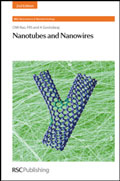 Nanotubes and Nanowires
Nanotubes and NanowiresNEW – Second Edition
C N Ram Rao and A Govindaraj, JNCASR, India
This fully revised new edition is an up-to-date survey of the research areas of carbon nanotubes, inorganic nanotubes and nanowires including synthesis, characterisation, properties and applications. An ideal resource both for graduates needing an introduction to the field of nanomaterials as well as for professionals and researchers in academia and industry.
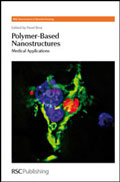 Polymer-based Nanostructures: Medical Applications
Polymer-based Nanostructures: Medical ApplicationsEdited by Pavel Broz, University Hospital Basel, Switzerland
Nanotechnology is about small things and medicine usually deals with bigger things - with patients and their diseases. This expert book combines both viewpoints and presents successful applications of nanotechnological constructs in medicine and the science behind the tools. The interdisciplinary nature of this title will make it of interest to polymer chemists, pharmacologists, biologists and clinicians alike.
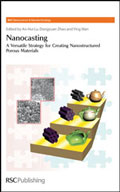 Nanocasting: A Versatile Strategy for Creating Nanostructured Porous Materials
Nanocasting: A Versatile Strategy for Creating Nanostructured Porous MaterialsAn-Hui Lu, Dalian University of Technology, China Dongyuan Zhao, Fudan University, China Ying Wan, Shanghai Normal University, China
This book focuses on the synthesis of porous solids and introduces nanocasting from fundamental principles to their use in the synthesis of various materials. Special attention is given to new developments in this field and future perspectives and topics covered include inorganic chemistry, organic chemistry, solution chemistry, sol-gel and interface science, acid-base equilibria, electrochemistry, biochemistry and confined synthesis.
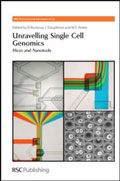 Unravelling Single Cell Genomics: Micro and Nanotools
Unravelling Single Cell Genomics: Micro and NanotoolsEdited by Nathalie Bontoux, Agilent Technologies, France Maria-Claude Potier, CNRS France Luce Dauphinot, CNRS, France
This unique introduction to the growing field of microfluidics applied to genomics provides an overview of the latest technologies and emphasizes its potential in answering important biological questions. Aimed predominantly at graduate students, this book provides all the necessary information to conduct experiments in microfluidics and molecular biology.
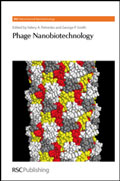 Phage Bionanotechnology
Phage BionanotechnologyEdited by Valery Petrenko, Auburn University, USA George Smith, University of Missouri, USA
Recently, phage - as a new kind of nanomaterial has attracted attention of specialists working in the boundaries of the field and even further afield from genetics and molecular biology, such as pharmaceutical science, material science, microelectronics, biosensors, detection, environmental sciences, etc. This comprehensive book, of value to researchers in all fields, brings the phage display technique closer to specialists in areas of medicine, science and technology, where phage-derived nanomaterials can be most beneficial.
 Nanotechnologies in Food
Nanotechnologies in FoodEdited by Qasim Chaudhry, Laurence Castle, Richard Watkins, DEFRA Central Science Laboratory, UK
This book provides a source of much needed and up-to-date information on nano foods and food contact materials. Ideal for scientists, regulators, industrialists and consumers alike, this valuable book reviews current developments in the field and highlights areas of uncertainty in relation to safety of the consumer and the environment, and regulatory inadequacies and gaps. The authors provide a balanced and impartial view of the applications of the new technology in food and food packaging, as well as addressing broader consumer safety and regulatory issues.
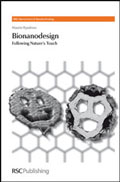 Bionanodesign: Following Nature's Touch
Bionanodesign: Following Nature's TouchMaxim Ryadnov, National Physical Laboratory, UK
Bionanodesigns are improving our understanding of biomolecular folding and structure. This practical guide to molecular nanotechnology describes the concept of, and provides rules for, building nanostructures from basics. It is, in essence, a fully referenced review, placed in the context of de novo biomolecular design. Illustrations and references provide an essential support to the text and a special appendix lists "who's who in nanodesign". This comprehensive publication brings together contemporary approaches for designing nanostructures that employ naturally derived self-assembling motifs as synthetic platforms.
“Ryadnov’s review of bioinspired nanomaterials is a timely contribution to this fast-paced field.” Reviewed in Journal of the American Chemical Society
 Nanoscale
NanoscaleA new peer reviewed journal publishing experimental and theoretical work across the breath of nanoscience and nanotechnology.
 Lab on a Chip
Lab on a ChipMicrofluidic & nanofluidic technologies for chemistry, physics, biology and bioengineering.
For more information visit the website www.rsc.org/nanoscience today or email books@rsc.org This e-mail address is being protected from spambots. You need JavaScript enabled to view it for a full title listing.
 Being at the forefront of nanosafety since 2006, we
aid companies to gain maximum understanding on safety of their nanoproducts -
during manufacturing as well as in-use. No matter if you are a nanotechnologies
producer, a user or both, we have all the tools to support your business.
Being at the forefront of nanosafety since 2006, we
aid companies to gain maximum understanding on safety of their nanoproducts -
during manufacturing as well as in-use. No matter if you are a nanotechnologies
producer, a user or both, we have all the tools to support your business.





















